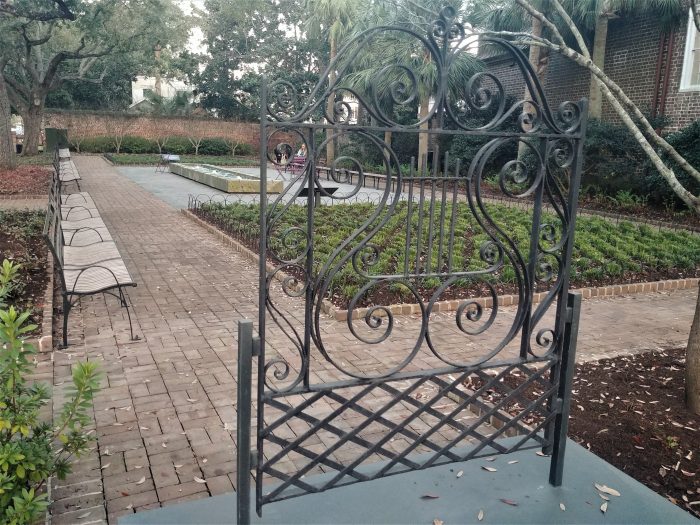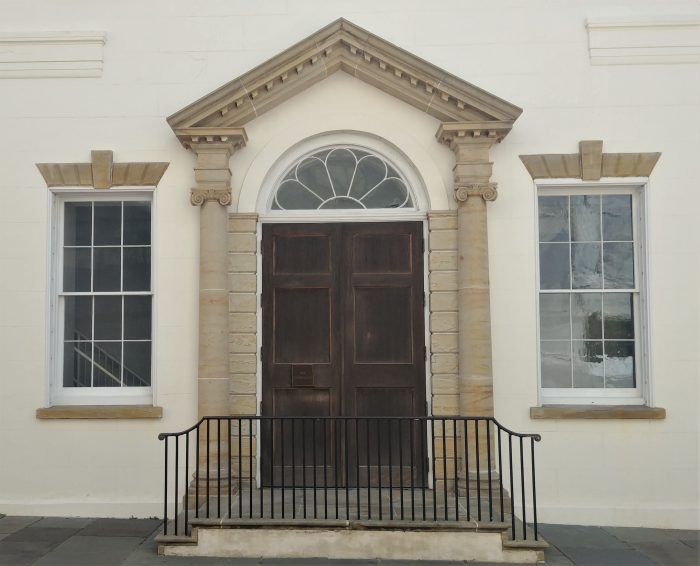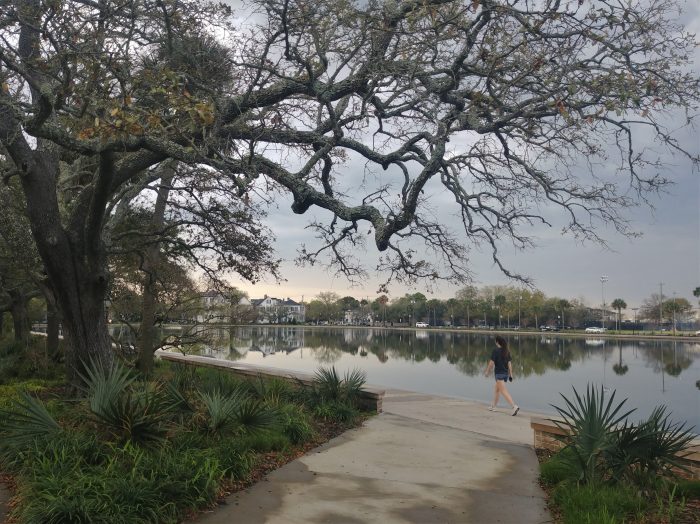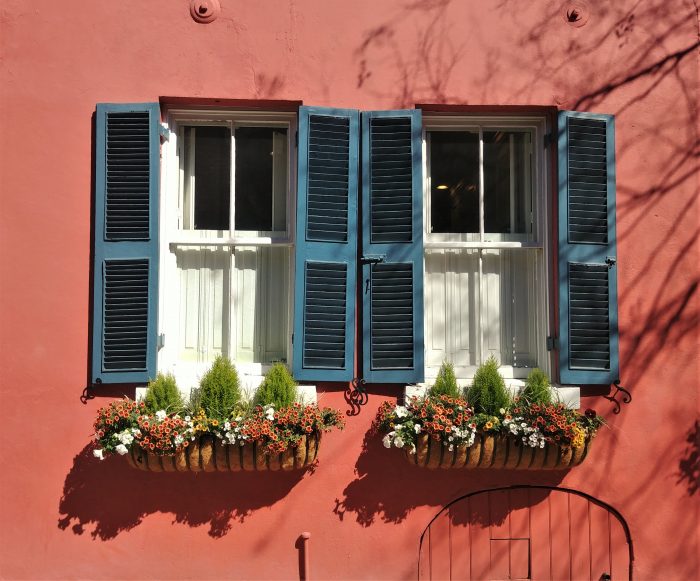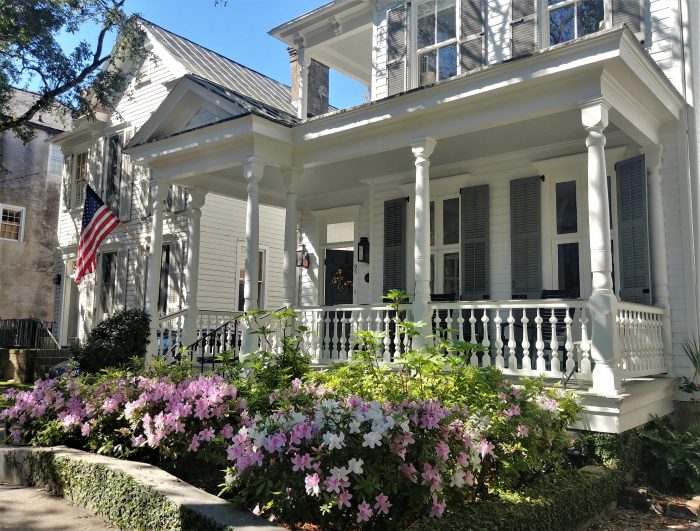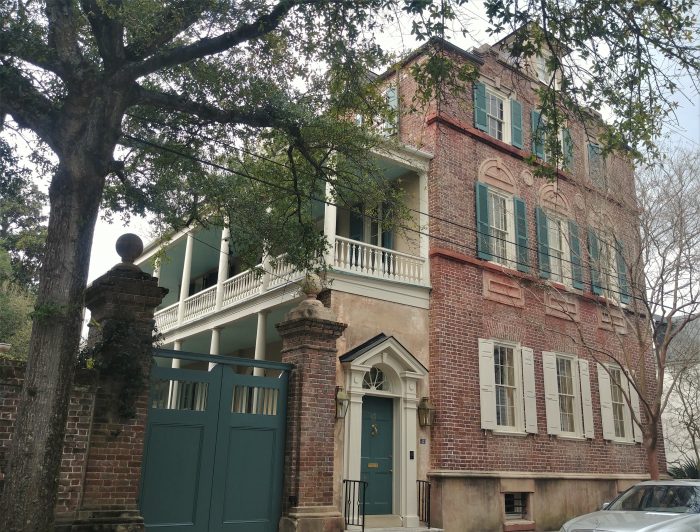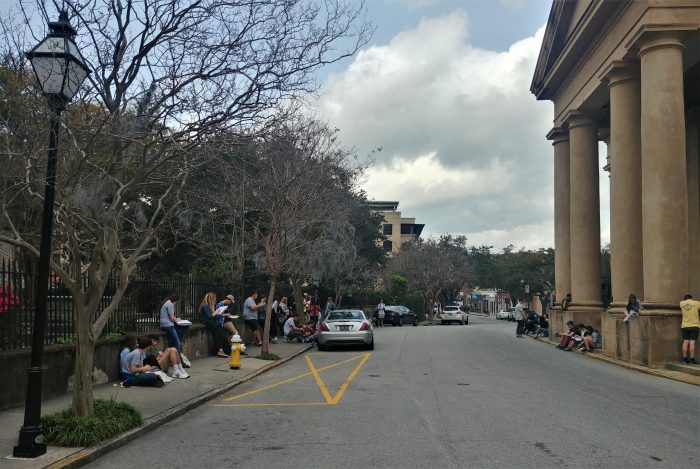Theodora Park is one of Charleston’s cool pocket parks — located right across from the Gaillard Center on George Street. This stand-alone gate by Phillip Simmons honors all the contributions he made to the beauty of Charleston.
County Courthouse
This beautiful door is one of the side entrances to the Charleston County Courthouse (one of the Four Corners of Law). The courthouse was designed by James Hoban, the same architect who designed the White House.
The Price is Pink
This pretty pink house can be found in Price’s Alley… one of the cool cut-throughs of Charleston.
The Pond
Early morning along Colonial Lake. The lake is named in honor of the Colonial Commons Act of 1768, which set aside the land for public use. Before its name was officially in 1881, it was simply called the Rutledge Street Pond, or “The Pond.” It’s a great place for a walk or run… or just to sit and watch the others go by.
Colors
This beautiful Charleston scene can be found on a c.1790 Tradd Street house, just around the corner from First Baptist Church — whose first congregation came to Charleston in 1696.
Azaleas
The pretty scene can be on Church Street — the blooming azaleas help highlight the beautiful porch.
It’s All In The Details
This house on Legare Street, built in about 1759, was renovated in 1911. Among the the changes made were the additions of the brownstone panels below the windows and the parapet. A little gussying up!
Artists
One of the great things about Charleston is that there is so much to see, photograph, sketch, or paint. Here a class is taking in the wonderful columns of St. Philip’s Church.
In The Pink
The house on Tradd Street, circa 1740, is guarded by two crepe myrtle trees — the longest blooming plants in Charleston.
Overflowing
This beautiful overflowing flowerbed is a great accessory to a beautiful house on George Street built about 1790. The owner specified in his will in 1787 that the house be built for the benefit of his wife or daughters — one of his daughters received it in 1791.
- « Previous Page
- 1
- …
- 69
- 70
- 71
- 72
- 73
- …
- 188
- Next Page »
